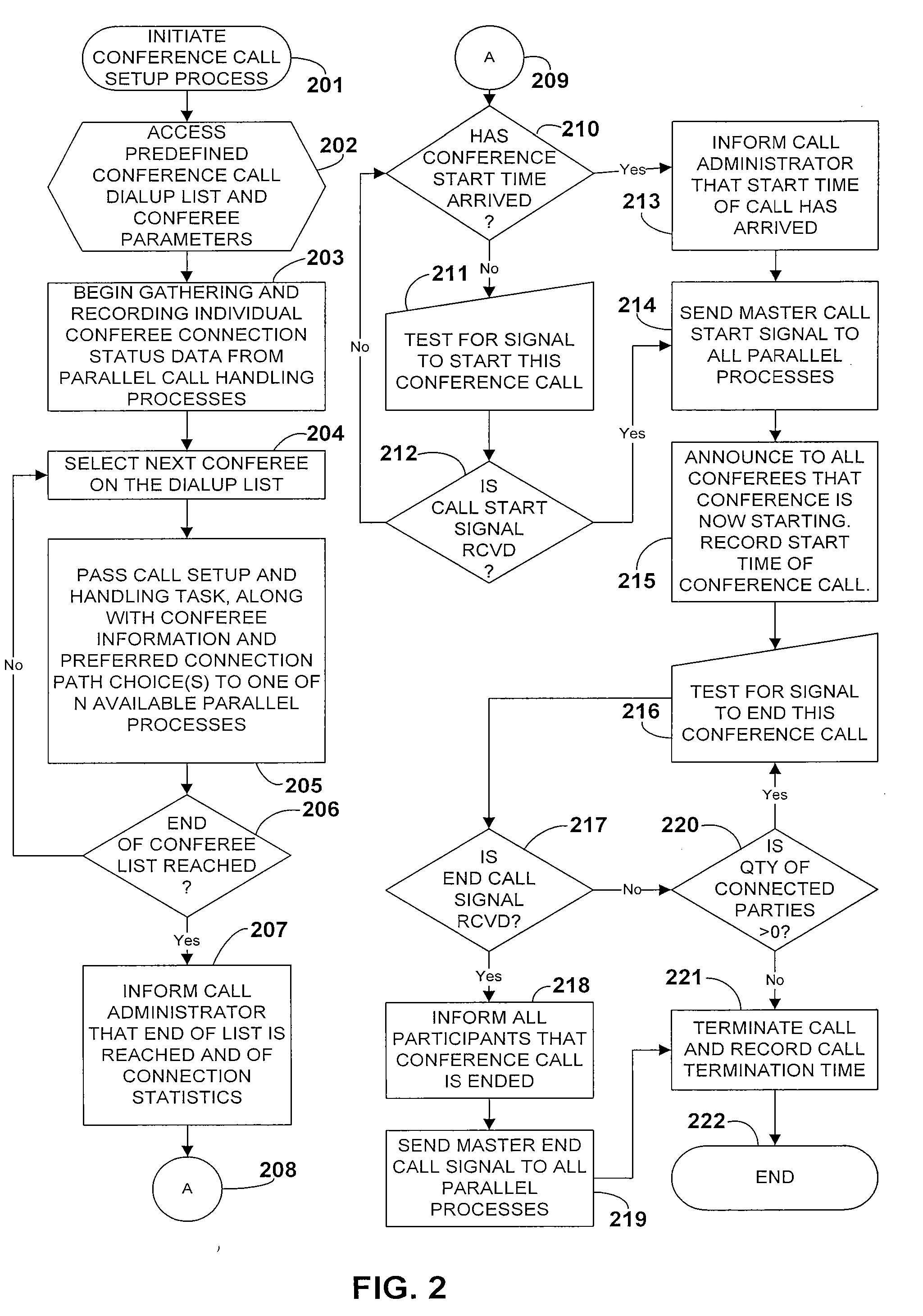System and process for mass telephony conference call
a technology of a system and a process, applied in the field of telephony systems, can solve the problems of uncoordinated approach parallel activity, uninvited participants can be connected into the conference call, time-consuming and error-prone manual process of serial dialing even a few conferees, etc., and achieve the effect of increasing the efficiency, coordination and speed of subsequent attempts
- Summary
- Abstract
- Description
- Claims
- Application Information
AI Technical Summary
Benefits of technology
Problems solved by technology
Method used
Image
Examples
Embodiment Construction
[0082] Referring to the drawings, a preferred embodiment of the invention will be described. First, the overall hardware architecture and connections will be described, following which will be a description of the operation of the software which controls the invention's hardware and processes. The specific embodiments set forth herein are merely representative of the present invention and the present invention is not to be limited to these specific embodiments.
Conferencing System Hardware High-Level Architecture
[0083] It can be seen that in the preferred embodiment of the invention, there is an architecture that at least partially includes the elements shown in FIG. 1 of the drawings.
[0084] Now referring to FIG. 1 of the drawings, it can be seen that there is a software program 110 operating to control teleconferencing controller 101. Software program 110 contains conference call setup process 112, which is triggered when software program 110 detects a condition indicating that ...
PUM
 Login to View More
Login to View More Abstract
Description
Claims
Application Information
 Login to View More
Login to View More - R&D
- Intellectual Property
- Life Sciences
- Materials
- Tech Scout
- Unparalleled Data Quality
- Higher Quality Content
- 60% Fewer Hallucinations
Browse by: Latest US Patents, China's latest patents, Technical Efficacy Thesaurus, Application Domain, Technology Topic, Popular Technical Reports.
© 2025 PatSnap. All rights reserved.Legal|Privacy policy|Modern Slavery Act Transparency Statement|Sitemap|About US| Contact US: help@patsnap.com



